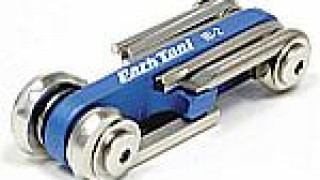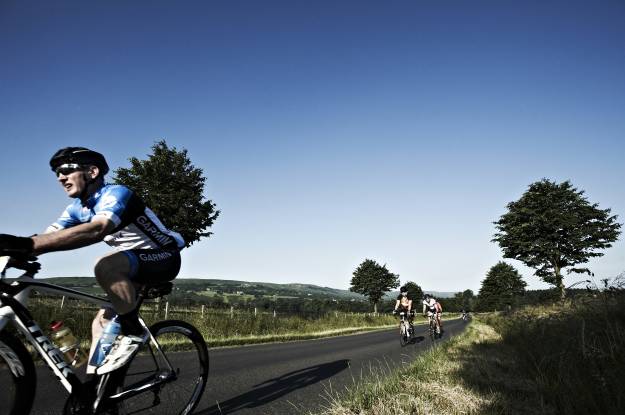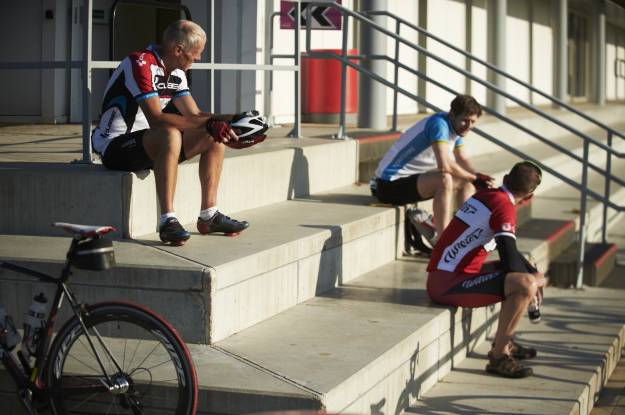Cyclosportive: Preparing your bike
Don't let last minute tinkering ruin your ride!
 Last week we looked at the bike options for sportive riding and concluded that although lightweight road bikes of various kinds are ideal for sportives, you can still tackle long road rides on other forms of bike, with a few key tweaks. This week we'll look at preparing your weapon of choice for the rigours of the road.
Last week we looked at the bike options for sportive riding and concluded that although lightweight road bikes of various kinds are ideal for sportives, you can still tackle long road rides on other forms of bike, with a few key tweaks. This week we'll look at preparing your weapon of choice for the rigours of the road.
There's nothing like tinkering with your bike before a big ride. Your bike will be your only friend as the miles unfold beneath your wheels. Sure, you'll be surrounded by likeminded riders, but ultimately it's just you, the machine and the road. So you need to make sure that your steed is in fine fettle.
However, please remember this one simple rule. Don't do anything drastic the night before the event. It's easy to succumb to that little devil on your shoulder telling you that you really need to swap out that double chainset for a triple at 10pm the night before the ride. Forget it. Trust me, I've spent many a fretful evening, maniacally swapping bars, cassettes, chains, chainsets, saddles, you name it. All in the name of making some minute marginal gain. I've also managed to lose important bits down cracks in the floorboards, break stuff and end up having to scour the shed by torchlight for nuts, bolts and springs.
The trick is to make any mods to your bike in the weeks and months leading up to the event. There are a number of good reasons for this. Whatever tyres, gearing, saddle or handlebar setup you end up with, you'll want to be completely bedded in with it. Getting used to a new position, or breaking your backside into a new seat on a 100 mile sportive ain't ideal!! So do your homework early.
So don't make any big changes to your bike the night before the event. Also, don't leave your ‘last minute' maintenance to the last minute either. Do your servicing about a week before the event, limiting yourself to the following checks:
- Check tyres for cuts, splits or perishing - remove any thorns, slivers of glass etc and inflate to your ideal pressure
- Check that that all bolts are nice and tight. Pay particular attention to stem bolts which take a lot of stress. Also check your crank bolts which can work loose very easily under high stress, hill climbing conditions (where you possibly wont have a nice big 8mm Allen key to sort the problem out)
- Make sure that your wheel QRs are sufficiently tight (and check them again if you plan to remove the wheels to transport your bike to the event)
- Visually check your frame for damage, cracks or ripples in the tubing (particularly at or near the tube joins). Check carbon forks and frames for signs of damage or delamination (where the laminate of the carbon begins to separate), as these components, though strong, can fail catastrophically.
- Wash your bike with a bucket, sponge and soapy water. This will force you to take a close look at the bike and also reveal any gremlins hidden under a layer of road dirt.
- Thoroughly degrease and relube your chain, rings and sprockets.
- Check the operation of your gears after relubing. If your chain shows any sign of jumping under load, you've got time to get your chain and rear cassette swapped out before the event.
- Check your braking surfaces for excess wear - if in doubt, you may need to replace the rim. Check your brake blocks for wear and to ensure that there are not small stones or pieces of grit trapped in the blocks which will quickly ruin your rims.
- Check all cables for fraying where they are clamped to brakes and gear mechanisms and replace if necessary.
- Pack your seatpack - making sure you've got at least 2 spare tubes, and multitool with chaintool tyre levers, repair kit and a pump.
Once you've done this and have given the bike a good shakedown ride, hang it up and leave it alone!
Doing this about a week before the event might seem premature, churlish even. However, it will give you time to identify problems and get them sorted at the bike shop. Remember, you've trained long and hard for this ride. Don't let a skipping chain or loose creaking cranks ruin your day.
Previously:
What are your bike preparation tips? Let us know using the Comments box below.







